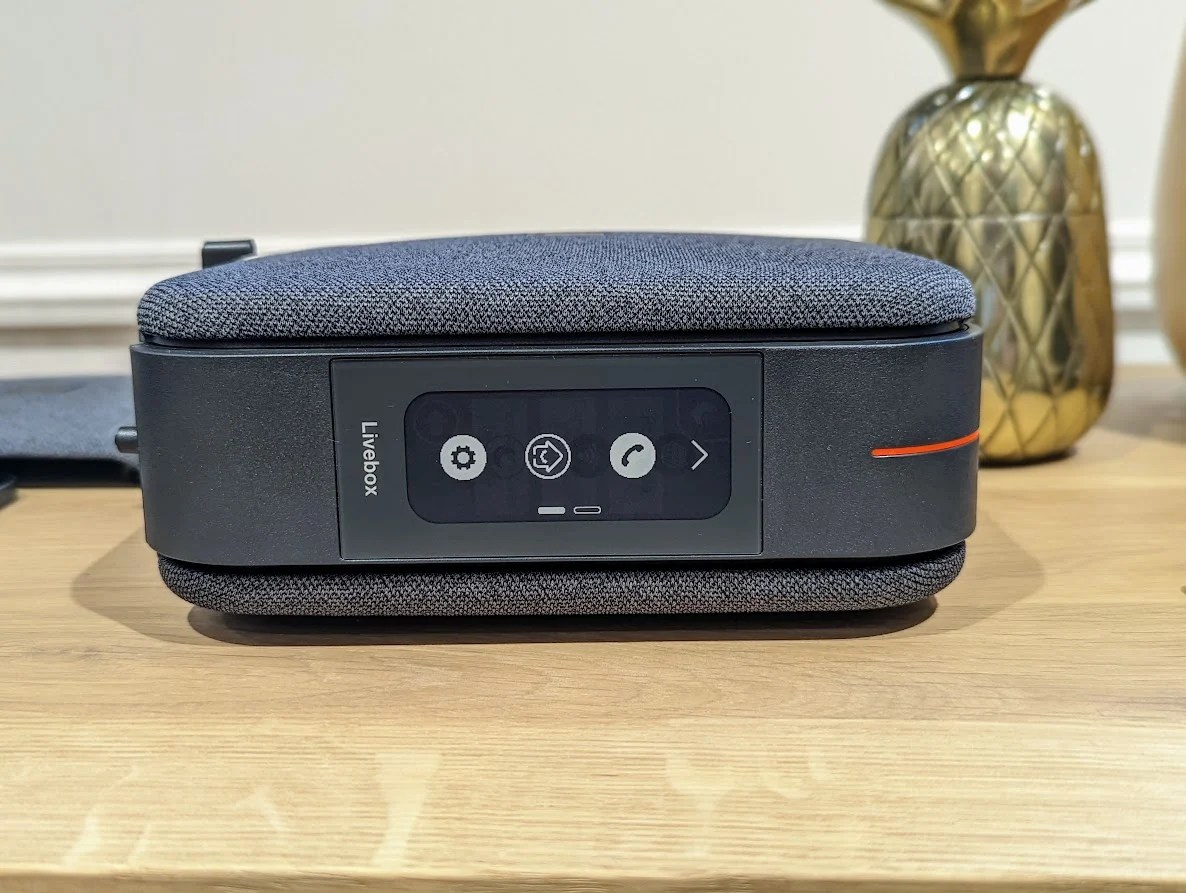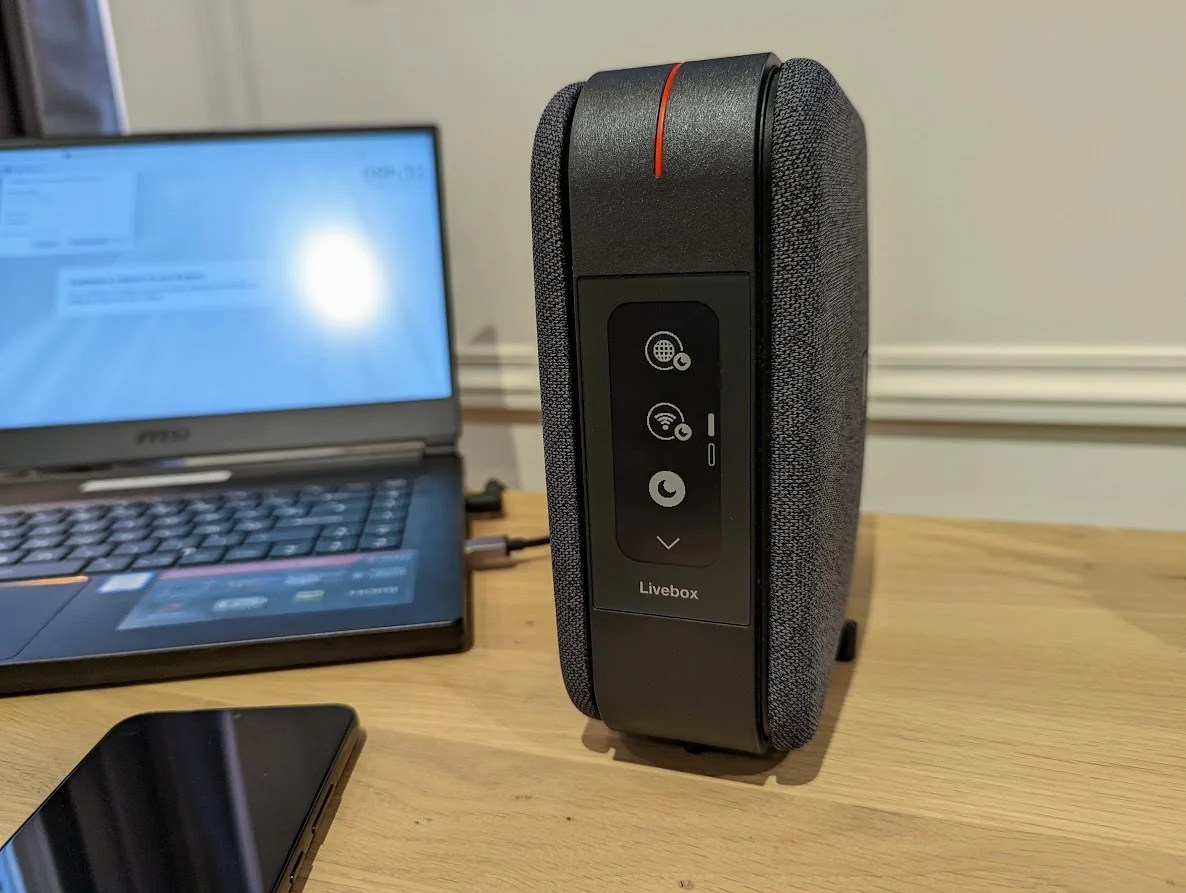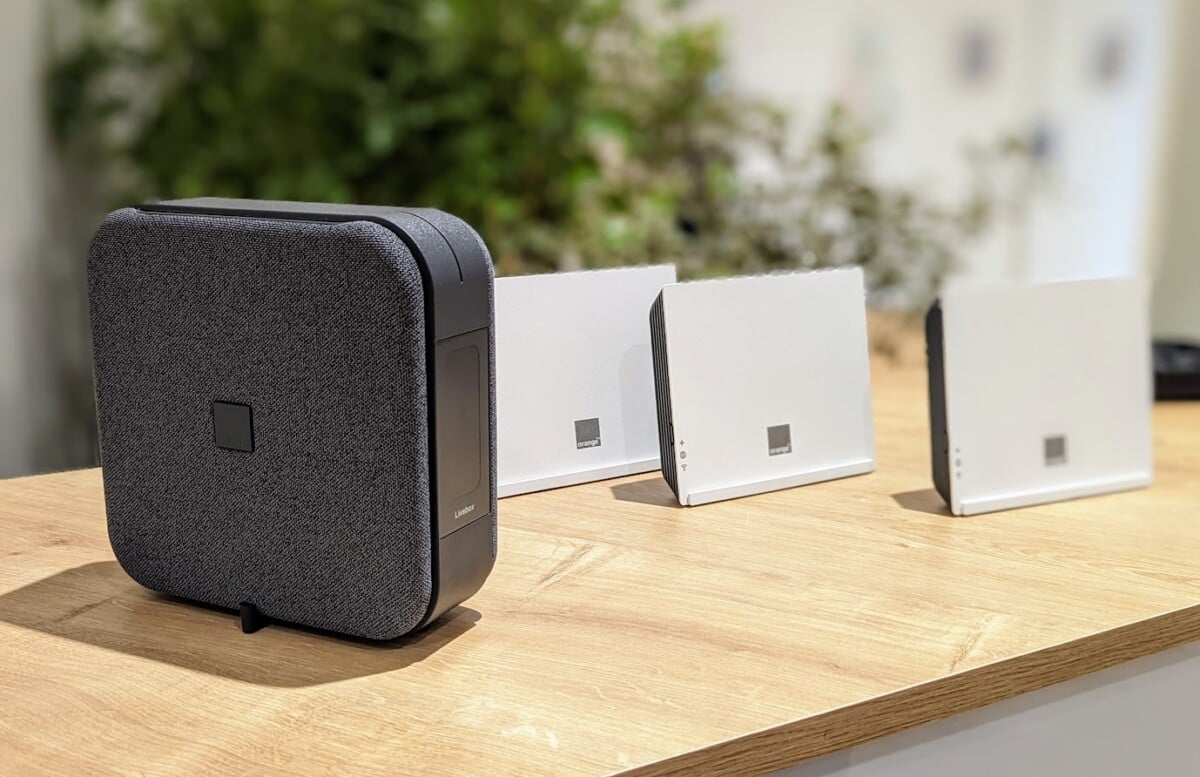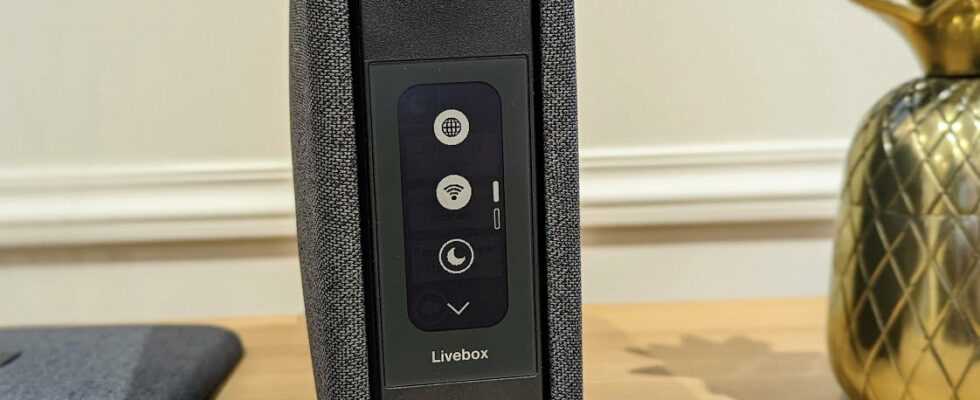Orange presented this morning its Livebox 6, a new WiFi 6E compatible internet box. A brief overview with its qualities and its faults.
Within a day, the Livebox 6 could have been the first WiFi 6E compatible operator box. Bouygues will nevertheless have pulled the rug out from under him a day earlier. This in no way detracts from the qualities of this Livebox 6 presented first in VR, ” in the metaverse “.
Uses have changed, operators are adapting
Uses change. With the Covid, our way of life has been permanently revolutionized, and this is only the beginning. According to OpinionWay, 61% of French men and women have discovered new uses of the Internet over the past two years, such as teleworking videoconferencing or teleconsultation. These uses have experienced exceptional growth on this occasion and have established themselves as a new way of thinking about our interactions. Coincidentally, the development of the Livebox began in March 2020, in full confinement.

According to Fabienne Dulac, deputy general manager of Orange, we gained 5 years [d’évolution] in just 2 years » and the future is still to be written with eyes obviously turned towards the metaverse, present on everyone’s lips although few are those who already perceive a real interest in it for the moment. This is also why this press conference was preceded by a quick presentation in virtual reality: in the room, around thirty journalists put on an Oculus connected by WiFi to a Livebox 6 to show the resilience and stability of the network, because this is the main interest of this Livebox 6: WiFi.
The latest generation of WiFi
The Livebox 6 is therefore the second WiFi 6E compatible box after the Bouygues Bbox ultym. This new standard is based on the use of the 6 GHz band (in addition to the traditional 2.4 and 5 GHz bands), less congested and therefore faster, smoother and more reliable in homes with a very large number of devices. connected. Orange thus promises to be able to offer download speeds of up to 2 Gb/s wirelessly, i.e. three times more than what a Livebox offers in WiFi 5. During the tests we carried out, we were able to reach 1800 Mb /s for 600 Mb/s upload speed on a Pixel 6.

The Livebox 6’s wired connection is also gaining in power. As expected, the Livebox 6 offers 5 Ethernet ports: 4 can offer a speed of up to 1 Gb/s and a last one going – theoretically – up to 2.5 Gb/s, for 800 Mb/s inupload(and up to 1 Gb/s for the Pro).
No symmetrical flow
At a time when Free and SFR are offering symmetrical (theoretical) speeds of up to 8 Gb/s with 10G-EPON technologies for Free and XGS-PON for SFR, one might wonder for the first access provider to internet is limited to such “low” speeds. However, to take advantage of such technology, the entire core network must be reviewed and very few users could benefit from it at present at Orange.
In addition, few devices are compatible at the moment and extremely limited uses in the context of a consumer household. If this is clearly the future, Orange therefore prefers to stick to more current technologies, to offer in a few years a new box which will take the next step with in particular Wi-Fi 7.
On a technical level, this can indeed be justified, but on an ecological point, this risks pushing a certain number of users to renew their equipment in a few years rather than keeping their Livebox 6. A point which can therefore be discussed, especially since the historical ISP displays great ecological ambitions.
Ecology at the heart of Orange’s discourse
Because yes, ecology is an important point in the communication around the Livebox 6 in order to stick to the company’s net 0 carbon objective by 2040 on all of its activities. First in its design (with recycled and recyclable plastic and increased repairability), then in its sleek packaging, but also in its basic operation and its power consumption.

A connected Livebox, but “idle(without data transfer) consumes, according to Orange, between 8 and 10 W. With the Livebox 6, Orange has integrated two standby modes that can be activated from the Orange & Me application. The first cuts the main functions of the box (WiFi, etc.), but leaves the phone active so that you can remain reachable. This simple function nevertheless requires keeping deeper strata of the box active and the saving is therefore minimal: barely more than 25% for a consumption of 5 W.
The second mode plunges the box into a deep standby state and it then only consumes 0.5 W. However, you will lose your home automation functions requiring a LAN network (surveillance cameras, connected speakers, etc.) for minimal savings. Fortunately, it is possible to program standby times or manage it remotely from its application.

In the same kind of detail, Wi-Fi band 6E is automatically disabled when no compatible device is available to save some power. On the scale of a household, it’s negligible, but on the scale of millions of Orange customers, it’s already that…
A Livebox Max plan more restrictive than anything else
Livebox 6 comes with a new package: the Livebox Max offer. This makes it possible to exceed the limit of 1 Gb/s per device and to take full advantage of the capabilities of the box. It is also a little more expensive: 34.99 euros per month for the first 12 months, then 54.99 euros per month thereafter. By overcoming the psychological barrier of 50 euros with few changes while a router (admittedly expensive) coupled with a Livebox 5 is enough to take advantage of Wi-Fi 6E, Orange is not putting itself in a position to flood the market with its new products. .
The offer is obviously available in Open format (quadruple play with a telephone plan) from 57.99 euros per month (33.99 euros the first year). For a telephone plan with 70 GB of data, however, you will have to pay 42.99 euros per month for the first year, then 76.99 euros.
All offers will be available from Thursday April 7 via the link below, in mainland France, but also in Reunion, Guyana, Guadeloupe and Martinique:
It’s expensive, but Orange puts forward several points to justify such a price: up to 3 WiFi repeaters, a wall bracket available free of charge on request, the second free TV decoder, as well as its Internet Start service (which offers 200 GB in 4G to new customers while waiting for their line to be activated), but also its after-sales service in the event of a move or breakdown and the simplicity of its box.

The Livebox 6 is easy to use
With its new sleek and vertical design (in order to concentrate the Wi-Fi antennas on the top and improve the diffusion of the waves), the Livebox 6 displays all the information on its screen in electronic ink on its touch screen. There is, for example, a QR Code to facilitate pairing, as well as extremely simplified initialization for installation. The box even takes care of reconnecting all your devices connected to an old box on its own if you are already an Orange customer.
Will this be enough to justify the 55 euros per month while the TV decoder does not evolve on its side? To have…
To follow us, we invite you to download our Android and iOS application. You can read our articles, files, and watch our latest YouTube videos.
